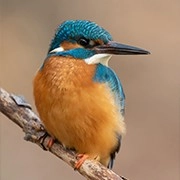The Festival of Colors
Welcome Lykkers! Let's see the celebration of Holi, often referred to as the "Festival of Colors," is one of India's most vibrant and celebrated festivals, marking the arrival of spring.
Celebrated with joy, colors, music, and dance, Holi unites communities across the country and has become popular worldwide as a symbol of love, forgiveness, and the triumph of good over evil.
The Origins and Mythology of Holi
The origins of Holi are rooted in ancient Hindu mythology. One popular legend is that of Holika Dahan, which tells the story of the demon king Hiranyakashipu and his son, Prahlad. Hiranyakashipu, who considered himself invincible, demanded that his subjects worship him as a god.
Unveiling the Marvels of Aloe Vera: From Ancient Legends to Modern Science
Colorful Traditional Handmade Rajasthani Puppets: A Glimpse into India's Vibrant Folk Art!
The Tabla: An Ancient North Indian Musical Instrument from Mysterious India!
Henna Art in India: A Timeless Tradition of Beauty and Celebration! Try Today!
Wishing You a Fantastic Halloween! Have You Picked Your Costume Yet?
Tips For Selecting Festive Flowers For Perfect Celebrations! Let's Start Then!
His son Prahlad, however, was a devoted follower of Lord Vishnu, which angered Hiranyakashipu. To punish Prahlad, Hiranyakashipu enlisted his sister Holika, who was immune to fire, to sit with Prahlad in a burning pyre.
However, her immunity failed due to her malicious intent, and she perished in the flames while Prahlad was saved. This myth symbolizes the victory of good over evil and is commemorated by lighting bonfires on the night before Holi, known as Holika Dahan.
Another beloved story associated with Holi is the tale of Radha and Krishna, whose playful love story inspires the festival's colorful nature. Young Krishna, who was dark-skinned, felt self-conscious about his appearance compared to the fair-skinned Radha. His mother advised him to color Radha's face to erase any differences, and this became a playful custom that evolved into Holi's colorful celebration.
Celebrations Across India
Holi celebrations vary across India, each region adding its unique twist to the festivities:
North India: In cities like Mathura and Vrindavan—places associated with Lord Krishna—Holi is celebrated with immense fervor. The festivities here can last over a week and include lively events like Lathmar Holi, where women playfully chase men with sticks, symbolizing Krishna's playful advances toward Radha and her friends.
West India: In Maharashtra, Holi coincides with the festival called Shimga, where the focus is on the bonfire ritual, followed by the celebration of Rang Panchami when people play with colors. In Gujarat, a similar celebration includes a pot-breaking ritual where young men form human pyramids to reach a pot filled with buttermilk, representing Krishna's playful side as a butter thief.
South India: While Holi is not as widely celebrated in South India, certain states still partake in it with their distinct traditions. In Tamil Nadu, the festival known as Kaman Pandigai is celebrated in honor of Kamadeva, the god of love, with bonfires symbolizing his sacrifice.
East India: In West Bengal, Holi is celebrated as Dol Jatra, especially in the Shantiniketan area, where it is known as Basanta Utsav or the Spring Festival. Started by the poet Rabindranath Tagore, the celebration here focuses on traditional Bengali music, dance, and a gentle application of colors in an elegant, cultural display.
Get an Up-Close Look at the Colorful Holi Festival | National Geographic
Video by National Geographic
The Colors of Holi
Holi is most famous for its vibrant use of colored powders, known as gulal. Traditionally, these powders were made from natural ingredients like turmeric, flowers, and sandalwood, but today, synthetic colors are often used. In recent years, however, there has been a return to eco-friendly and organic colors as people have become more environmentally conscious.
The symbolism of color in Holi is profound, representing the myriad emotions, relationships, and bonds in life. During Holi, everyone—regardless of caste, gender, age, or status—joins together, symbolically leveling societal differences. By splashing colors on each other, people forget grievances, mend broken relationships, and celebrate unity.
Rituals and Traditions
Holi begins with Holika Dahan, a bonfire ceremony held on the eve of the festival, symbolizing the burning away of evil. This ceremony involves chanting, dancing, and the lighting of a fire, often followed by offerings to the flames.
On the day of Holi, families, friends, and entire communities gather to celebrate by throwing colors, singing, and dancing to the beat of drums. Water guns and balloons filled with colored water add to the fun as people immerse themselves in the carefree spirit of the festival.
Festive foods like gujiya (a sweet pastry filled with khoya and nuts), thandai (a spiced, refreshing milk drink), and other regional delicacies are prepared to mark the occasion.
Holi Beyond India
In recent years, Holi has gained popularity globally, with festivals of colors being celebrated across the world, especially in countries with Indian communities. Cities like New York, London, Sydney, and San Francisco host annual Holi events that attract people of all backgrounds, drawn by the festival's universal message of love, unity, and joy.
Significance and Spirit of Holi
Holi is more than just a festival of colors; it embodies the spirit of inclusion, joy, and renewal. The festival reminds us of the importance of compassion, forgiveness, and unity. As families and friends come together, Holi strengthens bonds, allowing people to start afresh and leave behind the past.
The joyous celebration of colors brings a sense of excitement and freedom, allowing everyone to immerse in the present moment. Holi's universal appeal reminds us that life is meant to be celebrated together with joy and laughter.

 · Lifestyle team
· Lifestyle team